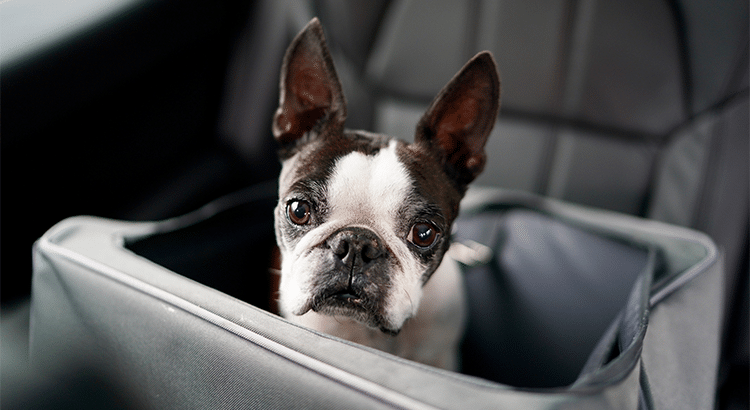
How to Choose and Use a Dog Car Seat
According to USA Today, there’s only one thing that travelers should expect in 2021 with any certainty: It’s uncertainty. With the current travel bans and quarantine restrictions, more people are taking it to the road, rather than the air. If you are a pet parent who is also taking your furry friend on a cross-country adventure by car, it may be wise to invest in a dog car seat. It is also advised to use a car seat when making a quick trip to the vet. But, where do you begin? What safety features should you look for? Are their weight limits? I have zero knowledge when it comes to dog car seats, so let’s learn together.
Safety Features to Consider
Where should the seat be installed?
The safest place to install a dog car seat is in the back so your pup is protected from the blow of front air bags and impact. While you see drivers with their lap dog riding in the front seat with them, this is especially dangerous because the pup can be crushed by the steering wheel or airbag in a collision. Therefore, installing your dog car seat in the back of your vehicle greatly reduces the risk of injury to your four-legged friend.
Follow this link to view a study on Dog Seat Crash Performance: Center for Pet Safety
What are the risks associated with not using a dog car seat?
Experiencing a car crash is horrible in itself, however it is even worse if your canine friend is injured. An injured pet can become disoriented causing them to walk into traffic, leave the scene and become lost, or become protective and not allow First Responders close to you. The ultimate risk is your dog can be seriously injured or killed in the event of a crash which is highly preventable. If an unrestrained dog goes airborne during a crash, he can develop projection forces equaling 40 times his weight. So, if your pet weighs 30 pounds, that equals 1,200 pounds of force.
Here are the top 10 Best Car Seats for Dogs, According to the Experts: The Strategist
Additional Useful Tips
While traveling, it is also important to include an updated tag on your pet’s collar. Pin Paws has you covered while also giving access to our lost pet notification system and online pet profile. Request your tag today on our home page, using coupon code WOOF to save 30% off your membership.




